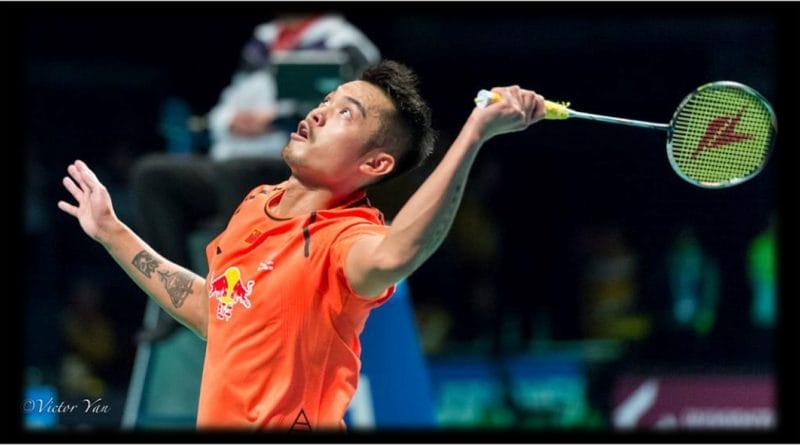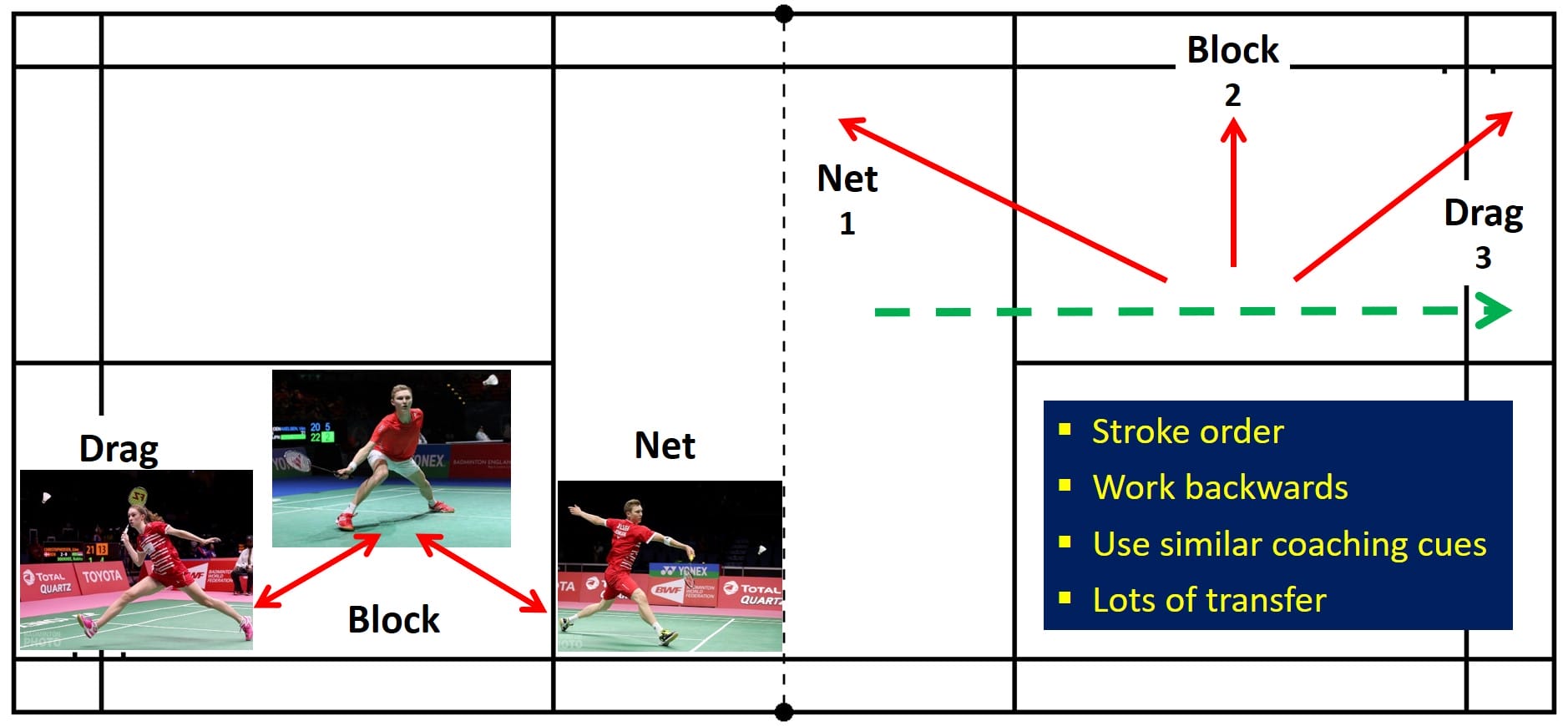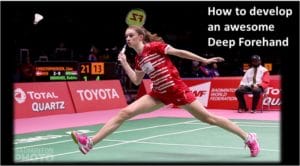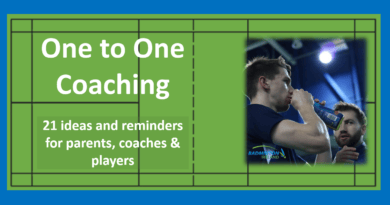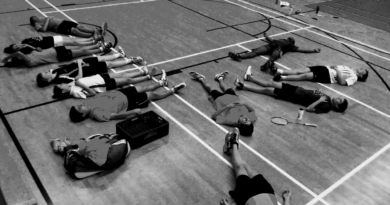The Deep Forehand – why it’s so important
This is one of the most important early strokes to learn
Every player needs a great deep forehand at the start of their Badminton journey, especially in singles
Not only will it allow you to exploit your opponent’s weaknesses, but it will also keep you out of trouble
This shot is called different things all over the world, here are a few I’ve heard
-
Forehand Pull
-
Forehand Drag
-
Deep Forehand
This post will introduce you to the stroke and why I believe it’s important
– – – – – – – – – – – – – – – – – –
Here are some tips and tricks I’ve learnt and seen from some fantastic coaches across Europe
1 It’s maybe more important than you realise
2 What is it and what isn’t it
3 It’s a weapon
4 The deep forehand journey
5 Future posts
– – – – – – – – – – – – – – – –
1. It’s maybe more important than you realise
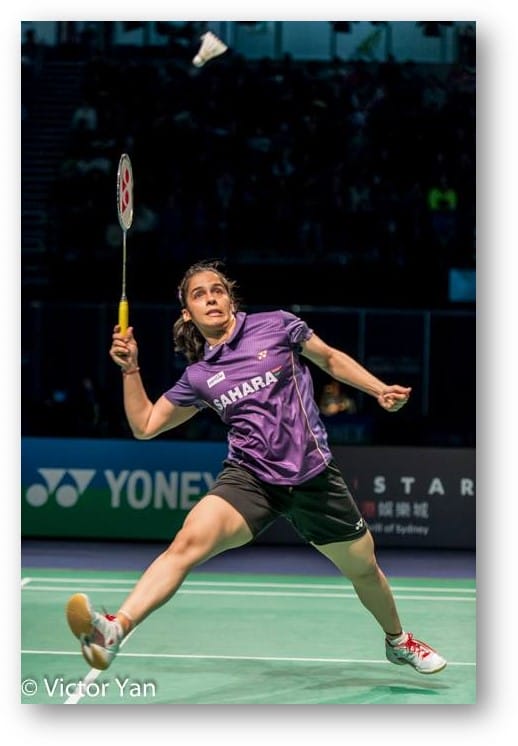 There is an argument to say that you need lots of strokes and all strokes are important. However, I think that the importance of this stroke is vastly underestimated.
There is an argument to say that you need lots of strokes and all strokes are important. However, I think that the importance of this stroke is vastly underestimated.
For me, its more important than a service, more important than a net shot and for the beginner just as important as an overhead.
Tactically – it will not just keep you in a rally longer (which has to be good), it will allow you to both nullify (prevent an opponents attack) and it will allow you to easily attack them.
Technically – it helps solidify some previously learnt concepts (movements, stances, EP’s) plus it provides a vital linking element (prior learning) to striking overheads.
Mentally – it is not that difficult to develop once you’ve done some Wallwork and the stages of development are easy to introduce. Plus it’s another great example for the use of Backward Chaining and Player Start Practices.
Challenges and Game Skills – these are easily developed in a layered but seemingly player led style. Rallies can be created with the results obvious to all, leaving lots of opportunities for reflection, Q&A, self-organisation. However only if the shuttle is returned by the feeder and even more so if the player starts the practice.
Coaches – it also provides lots of opportunities for progressive practices that include: player decisions, layered desirable difficulties, coaching cues that work, tactical developments not just technical repetitions.
I enjoy those moments when I first introduce and start working in this area
Almost by magic, development can happen much faster than the player expects
Plus it’s a great weapon to have on a singles court
– – – – – – – – – – – – – – – –
2. What is it and What isn’t it
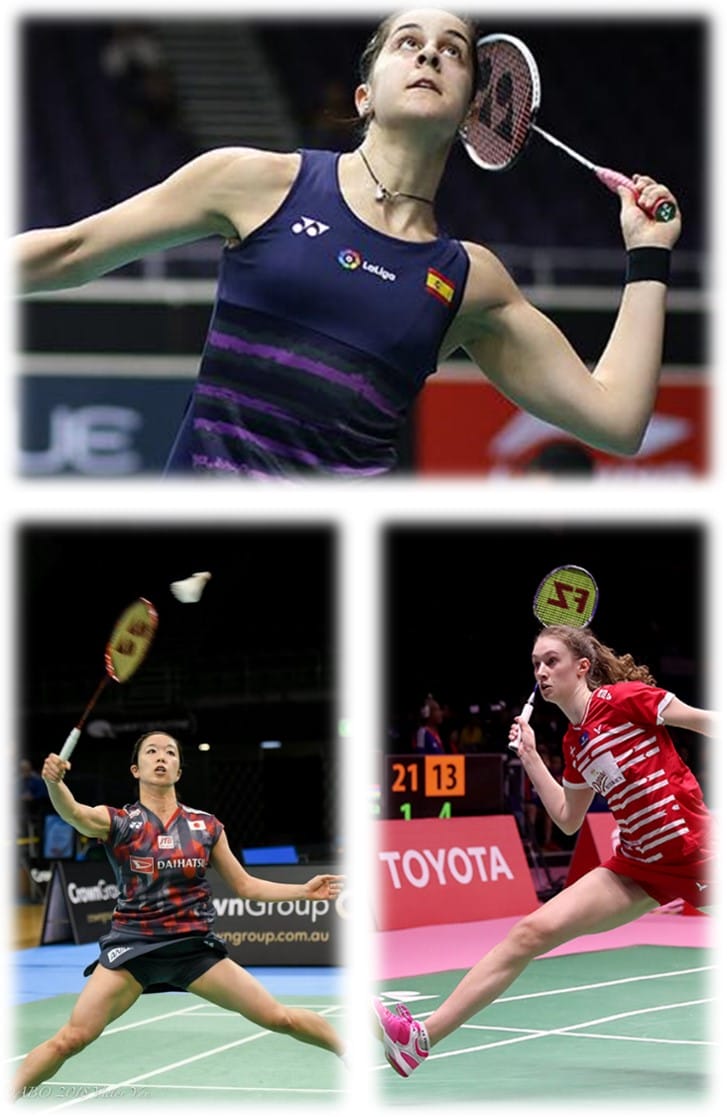 I should have said at the start exactly what this stroke and movement is. If you know already then jump to the next point.
I should have said at the start exactly what this stroke and movement is. If you know already then jump to the next point.
The stroke explained here is not a vertical ‘Jump-Out’, there is no explosive vertical element and clip down.
However, it still does contain an explosive foot out movement and it certainly has all the variations from the future overhead skills in later years.
It’s also not a stroke that requires lots of prior learning. You can try it out very quickly and progress.
I like to first introduce it as just another Wallwork exercise with self-feeding and only a few simple expectations.
Oh, and it’s full of tactical ideas and concepts
It isn’t a stroke to be repeated over and over again in a closed simple practice, maybe as you would for nets.
To get the maximum early development and benefit, this stroke and movement demand variations in practice situations, player experiences, feeding situations and of course layered decisions combined with critical key components. More of this later on.
It certainly is a stroke for all situations: attacking and defensive
– – – – – – – – – – – – – – – –
3. It’s a weapon
Your deep forehand can deliver plenty of weapons against your opponent.
I recommend that you think of all the different variations you know from this part of the court. Imagine situations when the shuttle is struck quickly over and past you either from the net or a hard fast/flat/punch clear into your deep forehand court.
You should have a long list of possibilities and variations.
Tactically this stroke can help in defensive and attacking situations: both defensive and attacking strokes are in my view weapons to be used. Plus the variations aren’t that difficult to learn.
But please don’t just try to jump out and intercept. That won’t help you in all the situations you’ve imagined. Jumping up and outwards (plus what to do when you are there) is certainly a skill to learn. However, this deep fh will not only keep you in the rally, but it will also allow to negate your opponent’s attack and maybe even turn a tough situation into your advantage.
In the early years, you can
- easily hit hard fast clears down the side of your opponent into their deep backhand
- easily hit down into your opponents backhand wide block zone
- easily frustrate your opponent when they are looking to an easy net/net kill and you hit flat towards their service line
In the later years, you can
- be confident that everything is ‘returnable’ from this part of the court behind you
- be confident that you can surprise/outwit your opponents with a variety of slices and speeds
- be confident that leaving this corner ‘open’ may encourage your opponent to play into your tactical trap
– – – – – – – – – – – – – – – –
4. The deep forehand journey
When I’m working with a player in this part of the court the most surprising thing was how motivational all the various progressions could be. Motivations for them and for importantly for me 🙂
Almost every stage of development and new learning would result in a high level of motivations
- Motivation born from success (obviously)
- Motivation resulting from facing each new challenge and the resulting rollercoaster (up/down/up) of success
- Motivation that then transferred from practice in games into the competition as the new found skill delivered all that it promised
- Motivation when the player realises that once a few core techniques are in place they can start to develop on their own. Oh, and then my job is so much easier as I say less and they learn so much more
If you like to know what happens during a great practice structure then the next part is just for you
During the development of the deep forehand look for these aspects:
- That there are plenty of opportunities to use transfer from recently learnt previous skills or concepts or critical technical aspects
- There are challenges or ‘desirable difficulties’ available to players and coaches at every stage, plus it’s not difficult to split them down in much smaller tough, yet achievable tasks
- Some established learning can be ‘forgotten’ (but still exhibited) and replaced with critical and exciting new ideas or tasks
- The more the spaced or varied the tasks/challenges the faster the learning. In fact, variation is far better than massed blocks of the same thing
- Players can contribute more and more in terms of what challenges they like: “I’ll try this next ..”, “Saina Nehwal does this so I’ll try it”, “feed me so it’s super tough”
– – – – – – – – – – – – – – – –
5. Future posts
I’ve written 2 more articles about this stroke that will be aimed at Players and Coaches. Go to the bottom to find the links.
Players will be encouraged to develop an awesome stroke and the tactics that go with it. We will look together at the 3 big stages of development from Wallwork to being on the court and replicating the World Class players you admire. What are those practices and thoughts that will help you?
You must have a good understanding of why and when to use this stroke plus all the variations along the way. It’s not just about having perfect technique and landing lots of shuttles on a target, it’s far more than that
Coaches, I hope that you are interested not only the key technical aspects but when to introduce each one. I think it’s vital that you consider the importance of how to place these technical aspects within a tactical context. Almost deliberately working to ensure that the players ‘forget’ that they ever heard them.
The development of this stroke certainly isn’t just talking about the technical elements, the practices you use should be aimed at developing learning that will help in a game, to beat or restrict opponents. Therefore be aware of what seems perfect practice and aiming to land lots of shuttles on a target or playing the stroke without it ever being returned.
I hope you will agree with me that it’s one of the most important early strokes to learn
Have you read The Deep Forehand – a Coaches guide
It explains how and when to introduce this stroke to your players, what steps could you follow, plus outlines the key components and practices
Come with me and explore the advice I’ve been given, plus the tips and tricks to establishing a great deep forehand
Have you read the 6 Ways to develop an awesome Deep Forehand
This post is aimed at players and will give you some ideas on how to make this an awesome stroke in defensive & attack. It will also help you contribute towards creating a great practice.

